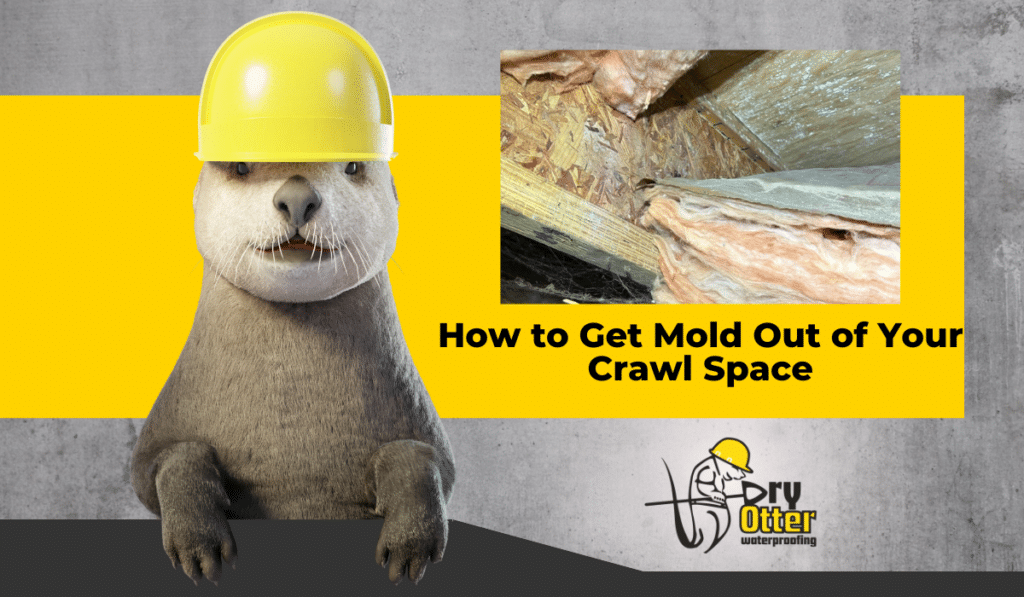When it comes to managing crawl space moisture, most homeowners are familiar with relative humidity. But dew point is just as important; maybe even more so. It explains why some crawl spaces collect condensation even when there’s no standing water or visible leaks.
If you’ve ever noticed water droplets on your ductwork, damp insulation, or mold growth along the joists, dew point likely played a role.
What Is Dew Point?
Dew point is the temperature at which water vapor in the air turns into liquid water. When air cools to this temperature, condensation begins to form on nearby surfaces. This is why your cold drink sweats on a humid day, and it’s the same principle at work in your crawl space.
According to the National Weather Service, the higher the dew point, the more moisture is present in the air. A dew point above 60°F is enough to cause condensation indoors, especially in cooler, shaded areas like crawl spaces.
Why Dew Point Causes Problems in Crawl Spaces
Crawl spaces stay naturally cooler than the air outside in summer. That’s partly because of their location underground, but also because the floor above and HVAC ducts running through the space keep it chilled. When warm, humid outdoor air enters through vents or openings, it quickly cools inside the crawl space.
As air cools, it can hold less moisture, so relative humidity rises. If the surfaces in the space (like ducts or wood) are cooler than the dew point of this incoming air, condensation forms. A helpful rule of thumb explains this effect: “For every one degree that the air is cooled, the relative humidity is raised by 2.2%.” -Basement Systems Website
Translated, that means in a crawl space that’s 5° cooler than the outdoor dew point, the relative humidity can jump by about 11 %. That extra moisture often shows up as visible water, mold, or damp insulation, even without an actual leak.
Any time outdoor air with a dew point above the crawl space surface temperature enters, moisture will condense, every time. This is why controlling dew point, and not just relative humidity, is key to preventing moisture problems in crawl spaces.
If you haven’t already, read our post on What Relative Humidity Should Your Crawl Space Be? for the target ranges that help avoid these issues.
Signs Dew Point Is Driving Moisture Problems
Because dew point affects air behind the scenes, it can cause issues long before you see visible water. Watch for:
- Condensation on ductwork or plumbing
- Mold growing in corners or along wooden beams
- Musty or earthy odors that persist
- Insulation that feels damp or sags out of place
- Floors above the crawl space that creak or sag
These are signs that your crawl space is repeatedly reaching the dew point threshold, allowing moisture to condense over and over again.
To understand why this is especially common in summer, check out Summer Humidity and Your Crawl Space: What to Know.
How to Monitor Dew Point in Your Crawl Space
Many digital hygrometers measure both temperature and relative humidity. You can use those numbers to estimate dew point with a calculator, or choose a device that gives the dew point automatically.
For a quick estimate:
- If your crawl space is 70°F with 60% RH, the dew point is about 55°F.
- If your crawl space surfaces are below 55°F, condensation will occur.
This is why managing dew point is just as important as managing RH. Even if the RH seems acceptable, cool surfaces can still pull moisture out of the air.
You can also use this Dew Point Calculator.
How to Prevent Condensation Caused by Dew Point
To prevent surface condensation, you need to either raise the surface temperature or lower the moisture content in the air. Here are the key steps:
- Seal vents and exterior gaps- to keep warm, humid outdoor air from entering
- Install an encapsulation- over exposed soil, walls, and columns to block ground moisture from evaporating
- Use a crawl space dehumidifier- to maintain steady humidity and dew point levels
- Insulate pipes and ducts- to prevent cold surfaces from attracting moisture
- Ensure proper drainage- to remove any water that does make its way inside
The U.S. Department of Energy supports this type of moisture control strategy. Sealing and conditioning the crawl space, rather than venting it, creates a more stable and energy-efficient environment.
Final Thoughts
Understanding dew point helps explain why crawl spaces develop moisture problems even when there’s no flood, leak, or visible water. It’s the hidden force behind much of the damage that appears in summer: mold, musty air, warped floors, and structural decay.
By sealing out warm outdoor air, installing proper barriers, and managing humidity year-round, you can stop condensation before it starts. For a full walkthrough of these solutions, visit our Crawl Space Waterproofing Resource Page and explore how your home can stay dry from the ground up.






